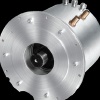Индустриален клъстер "Електромобили" - Учредители:








 |

|

|
| Актуално | За клъстера | Екип | Членове | Документи | Анализи | Услуги | Стани член | Награди | ССЕМ | Контакти |
ИКЕМ - Индустриален клъстер "Електромобили" | Понеделник, 29.12.2025 | |
|
Green Power for Electric Cars
Contrary to the trends in most other sectors, greenhouse gas emissions of the
In the coming decades, electric and plug-in hybrid vehicles could play a
Electric vehicles might even help to make the electricity sector more
T&E, Friends of the Earth Europe and Greenpeace European Unit have
Electrification of road transport
Compared to internal combustion engine technology (ICE), battery electric
The well-to-wheel environmental impact of EVs and PHEVs is largely |
Продукти 
Комплектна система за задвижване на електромобилиСистемата за електрозадвижване обхваща гама с три основни типоразмера на ел. мощност със съответните компоненти - електромотор и контролер. oще ...Виж всички продуктиАнкета с продължение...
|
|
|
 ЕВРОПЕЙСКИ СЪЮЗ Европейски фонд за регионално развитие Инвестираме във вашето бъдеще |
 |
 ОПЕРАТИВНА ПРОГРАМА „Развитие на конкурентоспособността на българската икономика” 2007-2013 www.opcompetitiveness.bg |
|
Интернет страницата е създадена с финансовата подкрепа на ЕФРР, в рамките на проект „Развитие на Индустриален Клъстер Електромобили” по ДБФП К-02-2/28.09.2011 г. |
|||